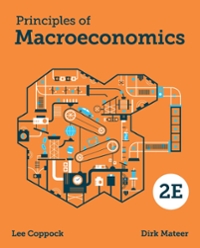1. Solow Growth Model The production possibilities in an economy can be captured with a constant returns to scale production function, Y = KOL1 -2 where Y is the total output in the economy, K is the capital stock and L is the total labor (workers) in the economy. The total labor force grows at an annual rate n. Capital depreciates at an annual rate d (so that a fraction 1-d of capital is left after every year). Consumers in the economy save a constant fraction s of their income. a) Rewrite the production function in the intensive form i.e (in terms of output per worker y, where y = = and capital per worker, k, where k = . b) The total addition to capital stock (investment in equipment and buildings) is equal to the total savings in the economy. Given that capital depreciates at rate d, write down an equation for the rate of change of capital stock (i.e K or = ) in the economy, in terms of the savings rate s, current output Y , depreciation rate d and current capital stock K. c) Use the equation in b) to derive an equation for the growth rate of capital stock - d) Capital per worker is given by k = =. Derive an equation for the growth rate of capital per k worker - in terms of growth rate of capital - and labor force growth rate z. e) Use equations in b) and d) above to derive the following expression for the rate of change of capital per worker, k = sy - (n+ d)k () Plot the intensive production function in a) and the equation for rate of change of capital per worker in e) above on the Solow diagram. g) On the Solow diagram, show the point (the capital per worker value (*) where the economy will converge to in the long run. h) Explain why the capital per worker will converge to the value &*, irrespective of the initial value of capital per worker in the economy.Air Canada and WestJet are two main competitors in Vancouver-Toronto flight route. Suppose both companies have two choices in setting their average price for one-way economy class tickets: either high price ($385) or low price ($215). Consider the following payoff matrix in which the numbers indicate the per-flight profit (in thousands of dollars) for such a duopoly (where A stands for air Canada's profit and B for West Jet's profit). WestJet High price Low price A = $60 A = $10 Air Canada High price B = $60 B - $80 A = $80 A = $40 Low price B = $10 B = $40 1. What is the dominant strategy for each firm? 2. What is the strategy chosen by each firm in Nash equilibrium? Why? 3. If the two firms collude, what strategy would they choose? Why? 4. Is the collusion outcome sustainable? Why?Lesson 4: State and Local Taxes and Spending 7. Suppose your state wanted to build a new public hospital to serve a rural area. From which budget-operating or capital-would this project be funded? Explain your answer. 8. Draw Conclusions Why does every state support at least one public university? What benefit does the state receive from this expense?Question 3 25 pts Here Is the following scenario for a 1 year Investment: Purchase stock: $101 Equity invested: $73 Debt: $27 Interest Rate: 10% Sales price after 1 year: $157 Answer the following questions (Show your calculations for full credit): 1. What is the leverage ratio? (Type in your answer and submit an image of your calculations into "Test #3 Submission" for full points.) 2. What is the rate of return for the year? (Type in your answer and submit an image of your calculations into "Test #3 Submission for full points.) 3. If the leverage ratio were to increase would the rate of return for the year increase or decrease? Explain from a mathematical or arithmetical view why this is the case? (Provide at least 1 paragraph for full credit | (You do not have to provide calculations for full credit.) 4. If asset prices declined and the sales price were to decline over the period to $30. assuming everything else remains the same from the scenario described above, what would the rate of return be? (Type In your answer and submit an image of your calculations into "Test #3 Submission" for full points.)Lesson 1: Understanding Taxes 1. Use context clues about the nature of progressive taxes to come up with a definition of the word progressive. 2. Compare and Contrast How are progressive, proportional, and regressive taxes similar? How are they different? Lesson 2: Federal Taxes 3. What are some steps a person can take to reduce his or her taxable income? 4. Determine Central Ideas Identify the common purpose of Social Security and Medicare taxes. Lesson 3: Federal Spending 5. What is the difference between mandatory and discretionary spending? 6. Draw Conclusions Why do you think that the percentage of federal spending that is mandatory has grown in recent years











